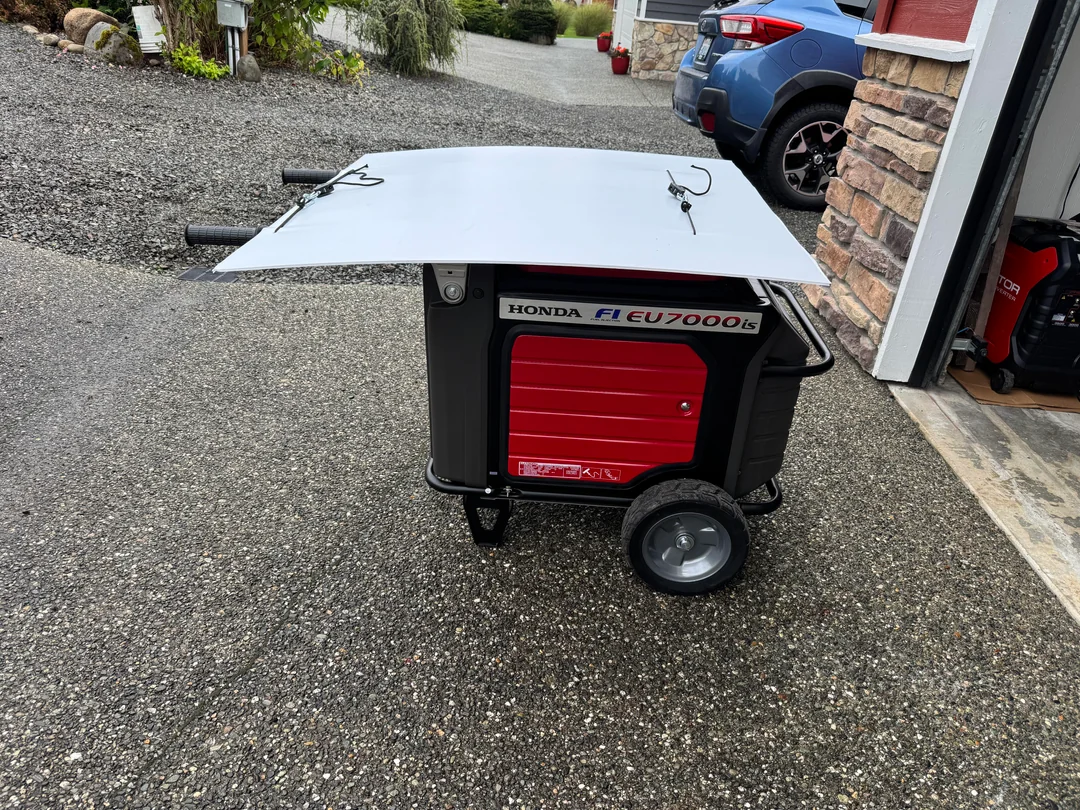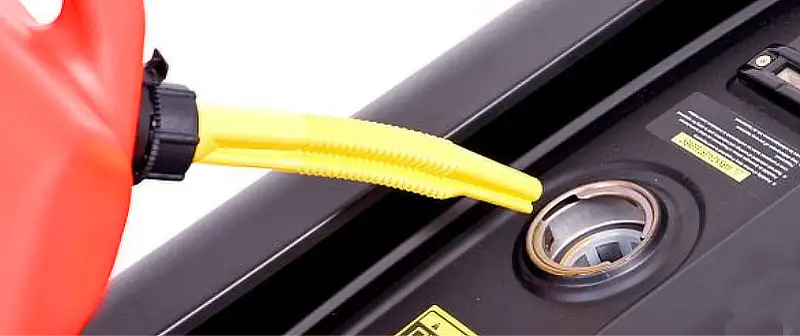A fuel stabilizer for a Generator keeps gasoline and diesel fresh by slowing fuel breakdown and preventing hard starts after storage. It protects fuel from air and moisture, so the engine runs when needed. Grounded Electric recommends a stabilizer any time fuel sits for more than a few weeks.
Keeping a generator ready for emergencies takes good fuel care. Fuel stabilizer prevents engine damage and buildup in small parts. Barret Abramow, project manager and co-owner at Grounded Electric, helps customers use safe storage practices.
Key Takeaways
- Fuel stabilizer protects stored gasoline and diesel from breakdown, preventing hard starts and corrosion in generators.
- Run the engine after adding the stabilizer to mix the treated fuel through the system.
- Ethanol absorbs water, so stabilizers made for ethanol help protect metal parts.
- Rotate fuel, use approved containers, and keep tanks full during storage.
- A Stabilizer cannot fix fuel that smells sour or looks dark.
Do You Need Fuel Stabilizer for a Generator?
Stored fuel loses power and becomes harder to ignite. Heat and air speed up this process and leave sticky residue behind.
A fuel stabilizer for a generator prevents these issues and supports easier starts. If you’re unsure what capacity suits your home, you can read our detailed guide on “what size Generac do I need?” to choose the right backup system.
How Fast Does Fuel Break Down?
Gasoline can break down in 30 to 60 days. Sticky deposits block fuel flow and reduce engine power. This can raise repair costs.
What Happens to Untreated Fuel
Untreated fuel thickens and forms gum. This can block carburetors and injectors. Old fuel loses its ability to ignite.
Benefits for Carburetors and Injectors
The stabilizer reduces buildup in small parts. Treated systems start faster and run cooler. It also lowers wear on these parts.
Is It Better to Drain Fuel or Use Stabilizer?
Draining fuel may cause spills and moisture. Stabilizer protects fuel without removing it. Keeping tanks full lowers water buildup.
How to Use Fuel Stabilizer Correctly
Read the label before adding stabilizer. Measure based on fuel volume and run the engine to circulate it. Treat fuel before seasonal shutdowns.
Measuring Dosage and Mixing Ratios
Most stabilizers list ounces per gallon. Too little will not protect the fuel, and too much may cause smoke. Always follow the label.
Running the Engine to Circulate
Run the generator for five to ten minutes. This pulls treated fuel into small parts. Skipping this step lowers protection.
Signs Fuel Has Already Gone Bad
Bad fuel looks darker and smells sour. Sticky residue may appear near the cap. The engine may crank but not start.
How Often Should You Use Fuel Stabilizer
Use a stabilizer if the generator sits longer than three weeks. Replace stored fuel every six months. Seasonal storage makes this common.
Best Fuel Stabilizer for Generator Options
These stabilizers keep fuel fresh, reduce corrosion, and support easy starts:
-
STA-BIL Storage – Simple and reliable for seasonal use.
-
PRI-G – Strong choice for long-term gasoline storage.
-
Sea Foam – Versatile option that cleans and stabilizes.
-
PRI-D – Best match for diesel generators.
Use the product that fits your fuel type for the best results.
How Stabilizer Saves Money
Cleaning carburetors can cost over $100. Stabilizer helps prevent this buildup and supports easier cold starts. It protects engine parts at a low cost.
Gasoline vs. Diesel Formulas
Gasoline formulas reduce varnish. Diesel options reduce microbes and smoke. For detailed options, check out our guide on the best diesel generator to see which model matches your needs. Using the right type boosts results.
Treatment Efficiency Calculations
Most products use one ounce per 2.5 gallons. A five-gallon tank needs about two ounces. Always check the label.

Compatibility With Ethanol Blends
Ethanol absorbs water and can separate in storage. The stabilizer reduces this risk and protects metal parts. It helps maintain ignition quality.
Where to Buy Fuel Stabilizer Nearby
Many stores carry fuel stabilizers. Online stores (Autozone, Home Depot, or Walmart) often offer fast shipping before storms. Keep a bottle ready for seasonal storage.
Long-Term Generator Fuel Storage Tips
Store fuel away from heat sources and flames. Use approved containers and check fuel monthly. Good storage reduces breakdown risk.
Fuel Disposal Safety
Take old fuel to a recycling center. Never dump fuel into drains or soil. Recycling helps prevent pollution and adheres to local regulations.
Proper Containers and Ventilation
Use containers rated for fuel and store them in ventilated sheds. Keep them off damp floors. Avoid storing near flames.
Rotating Stored Gas Safely
Use stored gasoline within six to twelve months. Mark purchase dates and replace old gas. This prevents engine problems.
Generator Maintenance Timeline
Run the generator for 10 minutes each month. Replace stored gasoline every six months. Check spark plugs yearly.
Quick Storage Checklist
Follow these steps:
- Add stabilizer
- Run engine
- Label fuel age
- Check monthly
Preventing Oxidation and Microbial Growth
Oxidation darkens fuel and lowers power. Diesel may grow microbes near water. The stabilizer slows these problems.
Common Mistakes to Avoid
Do not assume fuel stays fresh forever. Follow the label directions and check the fuel level often. Watch for color changes to avoid repairs.
Using Too Much Additive
Too much additive can reduce performance. Do not mix brands unless allowed. Some mixes leave residue.
Letting Fuel Sit Too Long
Fuel degrades after weeks. The stabilizer slows this, but cannot stop it. Replace fuel if it darkens.
Safety and Compliance Guidelines
Fuel storage rules protect homes and buildings. Local codes may limit indoor amounts. Bobby Mulholland recommends checking city rules first.
Fire Codes and Local Regulations
Codes limit the amount of fuel you can store indoors. Outdoor sheds are safer for large amounts. Some sites may require inspection.
Indoor vs. Outdoor Storage Rules
Indoor storage needs ventilation. Outdoor storage needs weather cover. Keep fuel away from heaters and pilot lights. Outdoor storage needs weather cover. You can also review our simple guide on protecting your generator from rain to ensure safe use in all weather. Keep fuel away from heaters and pilot lights.

Recommended Safety Distances
Store fuel at least 50 feet away from ignition sources. Keep containers out of direct sunlight. Store fuel off damp floors.
When Fuel Stabilizer Won’t Help
A fuel stabilizer cannot fix fuel damaged by age. Sticky or dark fuel must be replaced. Fresh fuel keeps engines safe.
Do Not Use Stabilizer When Fuel Is Fully Degraded
A strong odor and water layers indicate that the fuel is too old. Dispose of it safely. Running on bad fuel may damage the engine.
Severely Degraded Fuel Scenarios
Bad fuel clogs jets and filters. Engines may stall or fail to start. Dispose of the old fuel first, then refill with fresh gas and add a gas stabilizer for future storage.
Final Generator Maintenance Tips
Test the generator once a month. Keep it dry and clean. A gas additive for a generator supports smooth performance. Ensure the gas tank remains clean to prevent clogs. Barret Abramow helps customers plan maintenance.
Whether you need generator installation, maintenance, or expert fuel advice, the team at Grounded Electric is ready to help. Contact Barret Abramow and Robert “Bobby” Mulholland today to ensure your generator runs safely and efficiently year-round.



